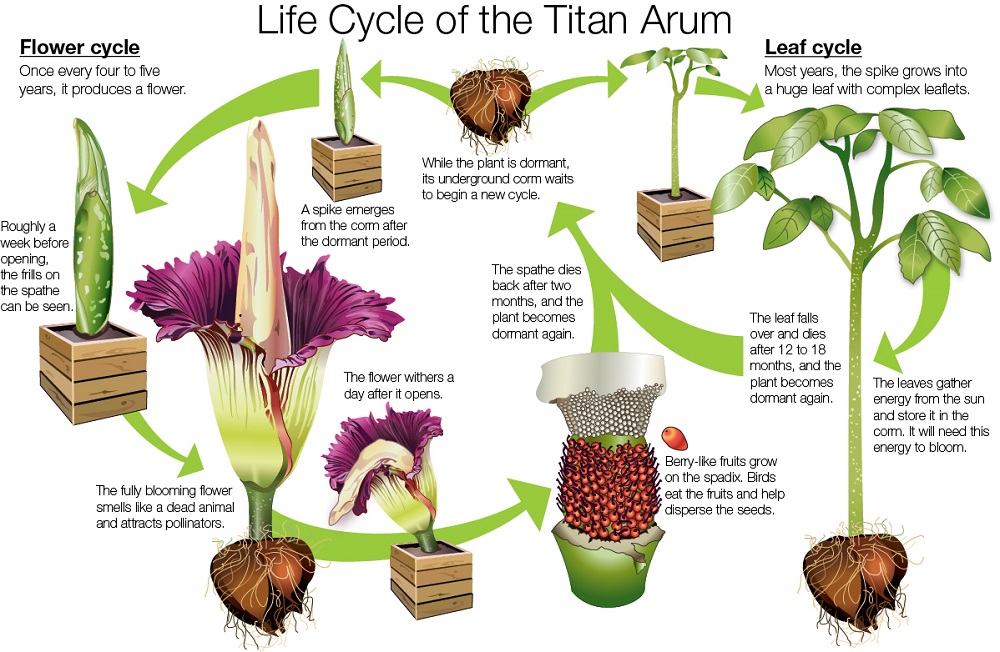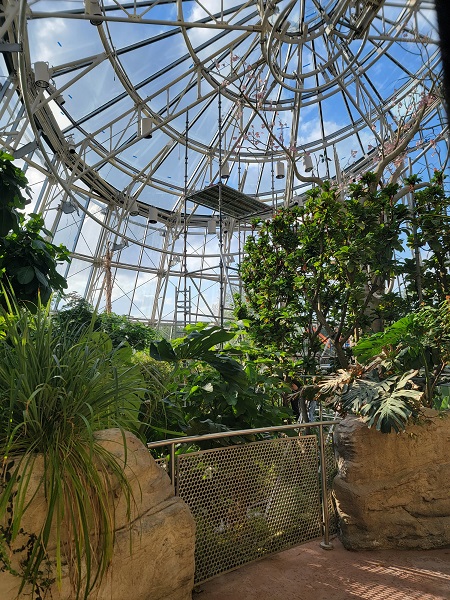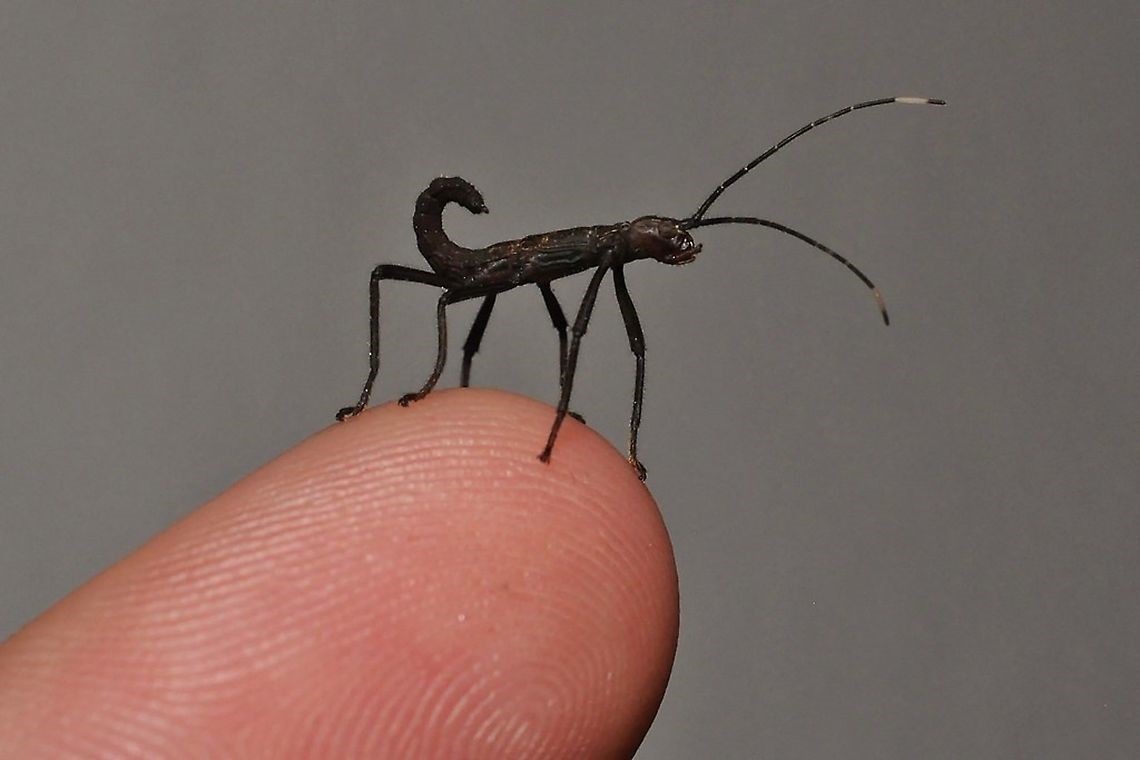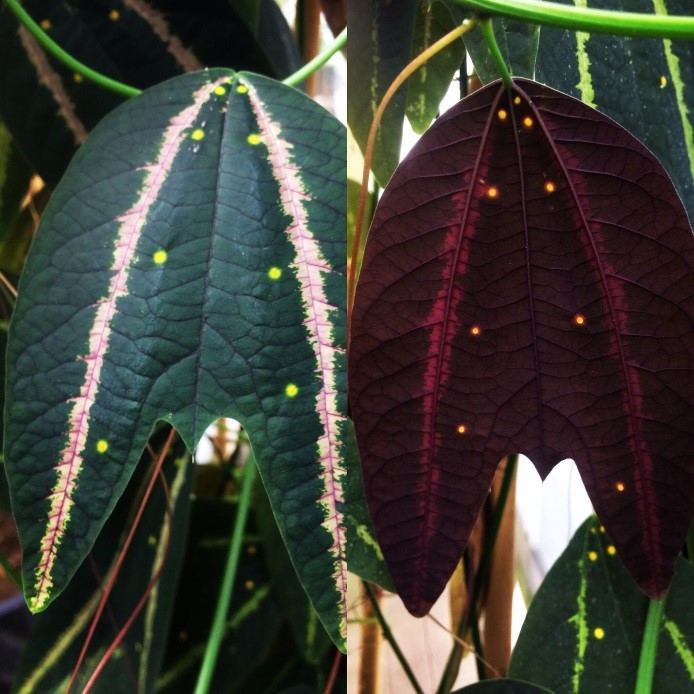In 1994, Dr. Nancy Greig inherited what was “basically a hole in the ground.”
More than 21 years later, the Cockrell Butterfly Center is a world-renowned exhibition, and Greig’s vision is a major part of the success of both the CBC and the Houston Museum of Natural Science.
As Greig puts it, getting the job “was just lucky.” Before moving back to Texas, Greig was wrapping up a year of postdoctoral studies at the University of Missouri-St. Louis where she was, in her words, “changing caterpillar diapers.”

Cockrell Butterfly Center Director Dr. Nancy Greig visits with a rice paper butterfly in the facility her efforts have made hugely popular.
“This professor I was working with was looking at the caterpillar fauna on three species of oak tree. After we collected them in the field it was my job to raise them in the lab so we could determine what species they were,” Greig said. “I had to get them fresh leaves and clean the containers out, so that’s why I called it changing caterpillar diapers. Pretty much you have to dump the ‘frass’ out every day.”
Greig’s background is a blend of tropical plant biology and entomology. She did her graduate work at the University of Texas, Austin, conducting research in Costa Rican rainforests under the supervision of Dr. Larry Gilbert, who studies tropical butterflies. Between receiving her Ph.D. and the postdoc position, Greig spent two more years in Costa Rica teaching a tropical ecology course, that was “like summer camp for graduate students – an amazing experience.” She was back in Austin for a Christmas visit in 1993 when her UT advisor remembered he had recently received a call about a position at HMNS.
“I thought I was going to be a University professor or something, and I was expecting another year or two of postdocs,” Greig said. “But I got in touch with the museum and they wanted me to come to Houston for an interview. Two weeks later, they called in St. Louis and asked, ‘How fast can you be here?’”
Greig’s field experience in Costa Rica gave her a leg up on the job; during her field work and subsequent teaching, she had spent plenty of time getting intimately familiar with the neotropical rainforest environment the museum wanted to craft in Houston.
When Greig first arrived in Houston, the Cockrell Butterfly Center was still under construction.
“It was a hard-hat zone,” she said. “There were cables and ropes everywhere. Some of the cement planters were in place, but not much else. The metal struts were up but there was no glass.
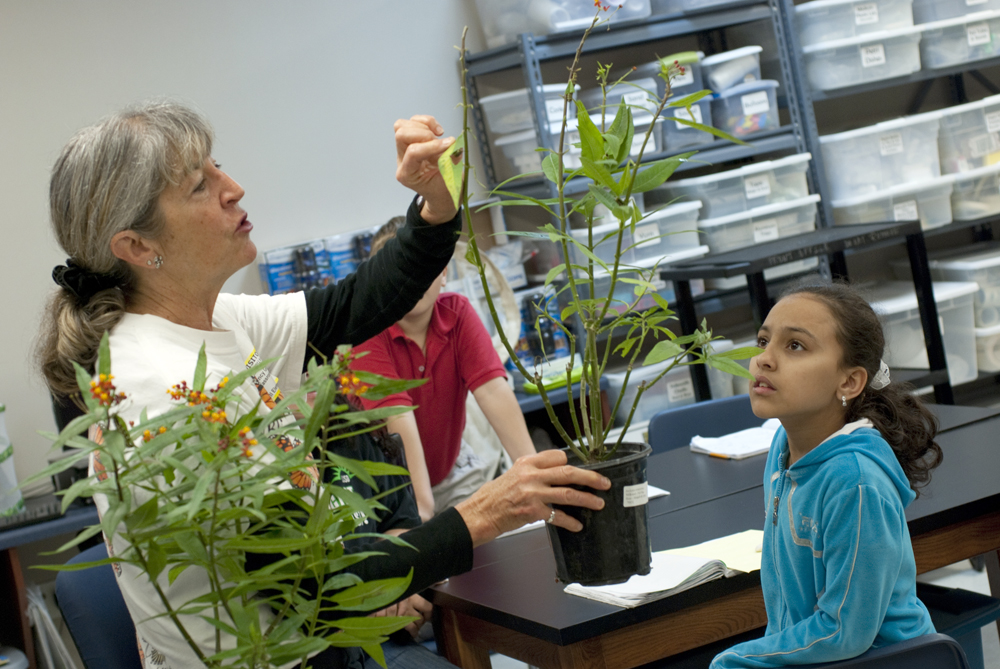
Greig educates students about plants as well as insects. In nature, the two forms of life depend on each other.
“It was so bare when we first opened, so of course it’s grown up [since then]. At first the plants were so small,” Greig said. But despite the bareness, “the first year, we had a millon people come through the butterfly center. It was a big deal, and kind of a trial by fire. I had never been on television or radio before, and we got plenty of press. I had to learn to talk in front of a camera!”
Her first duties were to help oversee the construction and work with the builders and the landscape architects. She also had to hire staff, get the butterfly importation permits, and create the museum’s first entomology hall. This precursor to the current Brown Hall of Entomology contained many preserved specimens but had lots of text and no interactive displays.
“People would go through the butterfly center first and then go up there – and the energy level just died,” Greig said. “There were some great specimens and some good information, but it was a very quiet, somber space.”
After several years, Greig and the Exhibits department began planning a bigger, brighter, vibrant entomology hall. Along with a couple of museum board members, they visited museums and zoos all over the country to see what others had accomplished and how to adapt the best qualities into one fun, educational hall. The result has been well-received.
Gone were the static displays, replaced by interactive games, giant models and live arthropods. One of the biggest changes was to move the display cases closer to the ground, making the whole exhibit more kid-friendly and engaging.
The unveiling of the brand new Brown Hall of Entomology on July 1, 2007 was one of the highlights of Greig’s 22-year tenure as director, followed closely by the hysteria of Lois the corpse flower and “Cash for Cockroaches.”
In preparation for the opening of the new exhibit in 2007, the CBC offered to buy up to 1,000 cockroaches for 25 cents each from Houston residents to fill a feature of the hall, the Roach Dome. The public response was huge, and the story made the front page of the Houston Chronicle before jumping nationally and beyond with coverage from Reuters.
Lois similarly brought in a surge of media attention when the giant corpse flower showed hints of blooming in the summer of 2010. After being cared for and nurtured for years up in the greenhouses, Lois sprouted a slightly different stalk, sending the city of Houston into a three-week frenzy that culminated with her stinky bloom in July. Celebrity status was afforded to horticulturist Zac Stayton, a parody Twitter account was born, t-shirts and buttons were mass produced, and a documentary was made and released in the aftermath.
“It was so great for the museum; so great for Houston,” Greig said. “That is what the museum should be about. It was exciting and educational and fun. There was one woman who came over 30 times! At least once, sometimes twice a day!”
While Greig has always loved “creepy crawlies,” she has devoted her life to educating others about the positives bugs and arthropods provide to the world. She says that you can’t force that appreciation on people, but you can try to get through to them by asking them to imagine what the world would be like without them, among other tactics.
“I try to educate them with some fun stories and show that I’m not afraid. That there’s nothing to be afraid of. Seeing that someone can be totally comfortable with insects and spiders is important,” Greig said.

As an arthropod-lover, Greig believes all insects are important, and that even roaches are deserving of our love.
Greig herself is very enthusiastic about the evolution of many insects and their various adaptations for survival. The camouflage used by insects such as walking sticks and katydids really gets visitors thinking about how life got to this point, and Greig counts that as one of the must-sees of the Cockrell Butterfly Center. She is passionate about moving past the “creepy crawly” label as a result.
“It’s neat to be able to use the butterflies as the hook, the ambassadors, I would say, to bring people in, and then we help them to realize that bees and even cockroaches are important,” Greig added.
While Greig has always had a love of nature, she arrived at UT from Calgary ready to study linguistics. She says she took a circuitous route back to biology and that she is proof that “you can do really whatever you want to do.”
“It’s turned out to be really a perfect fit,” Greig said. “Running the Butterfly Center has been a great job for me. There are really not that many jobs like this. It was total serendipity.”
Visitors to the Cockrell Butterfly Center in October can see special plant life in the rainforest conservatory during the temporary exhibition, Savage Garden. And teachers hoping to meet Greig can mark their calendars for The Educator Event @HMNS Jan. 23, 2016, where she will give the keynote address. In addition, educators can book one of Greig’s Bugs On Wheels Outreach Programs, Monarchs or The Buzz About Bees.
#ChillsAtHMNS



